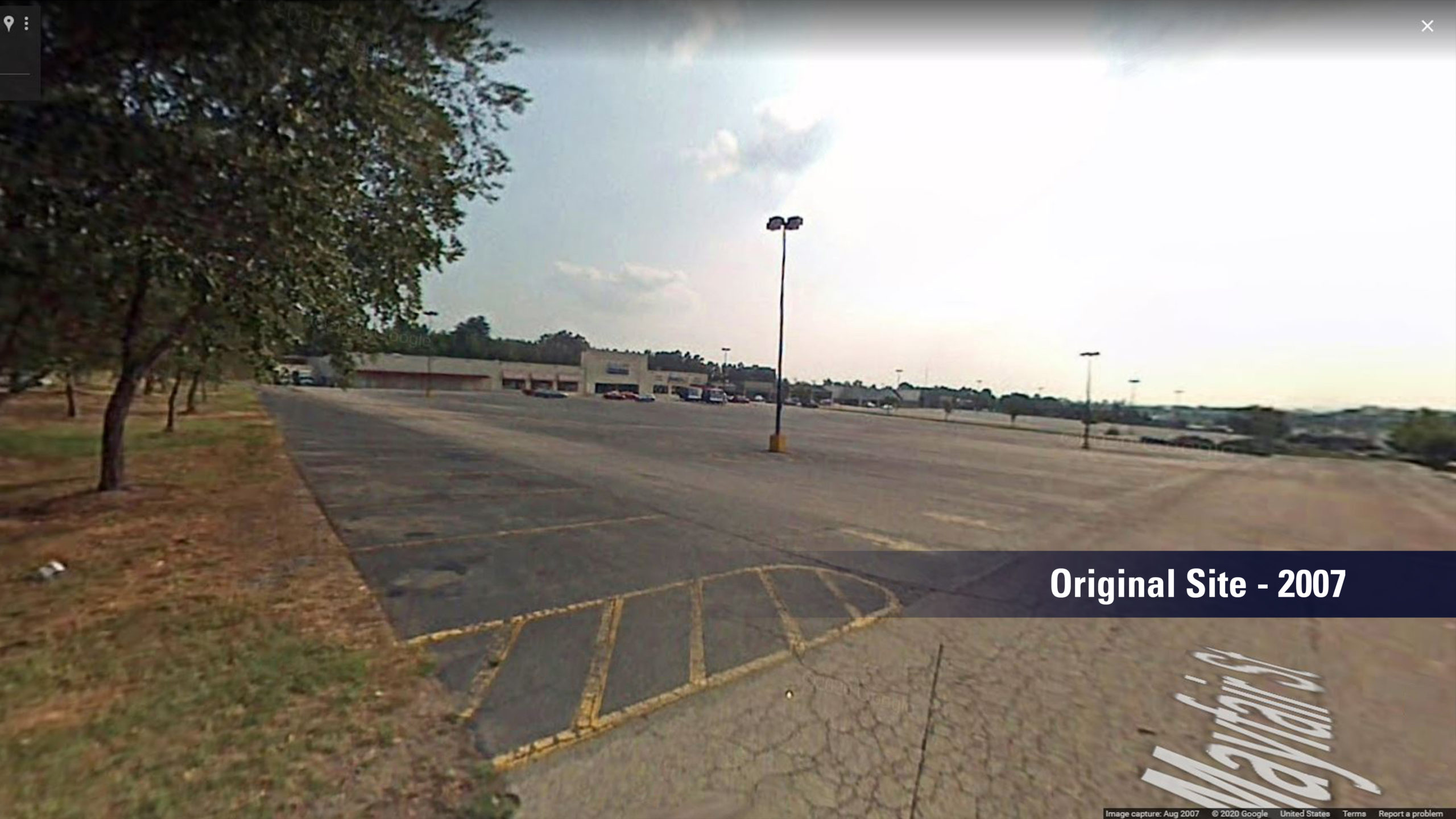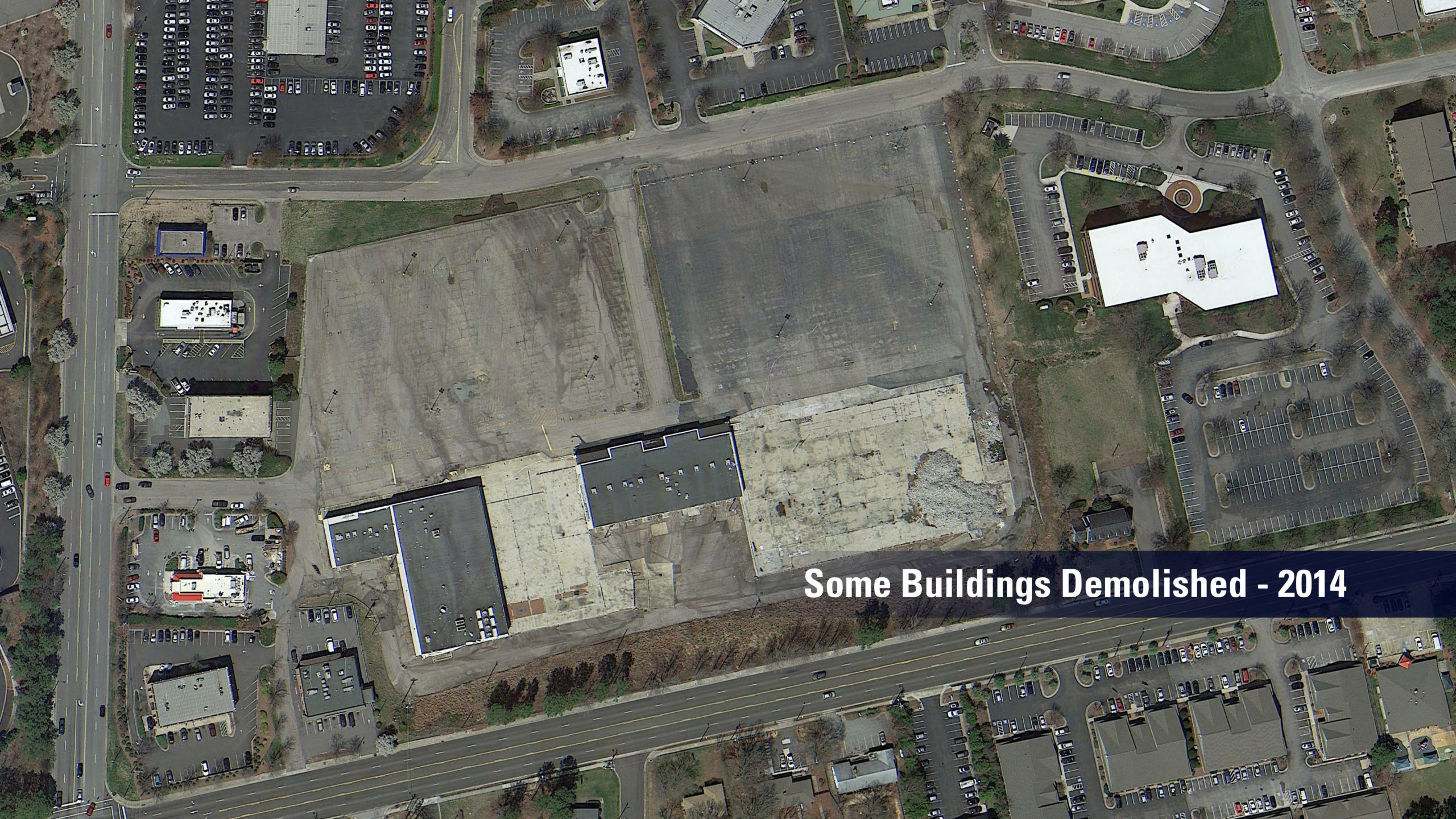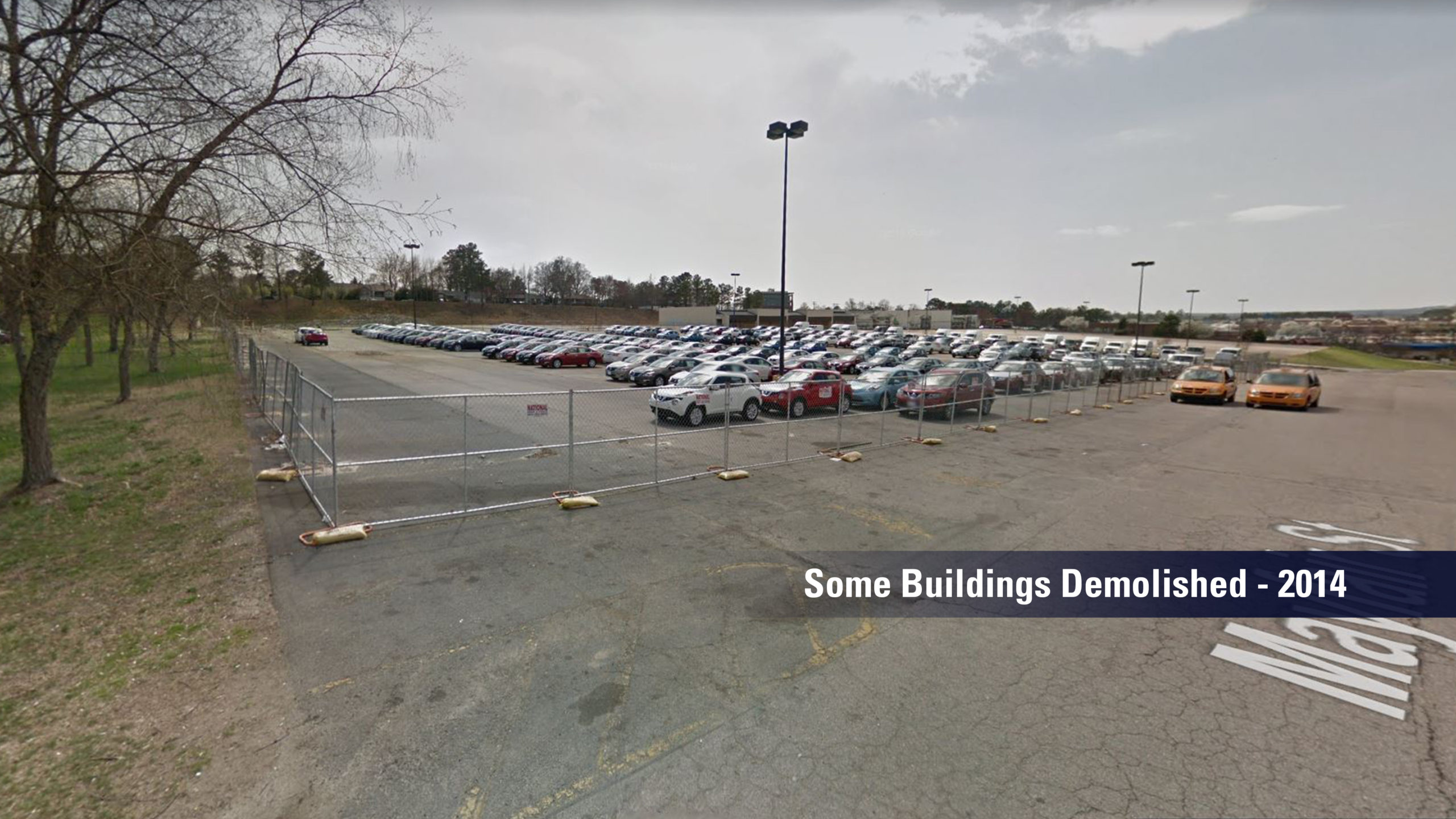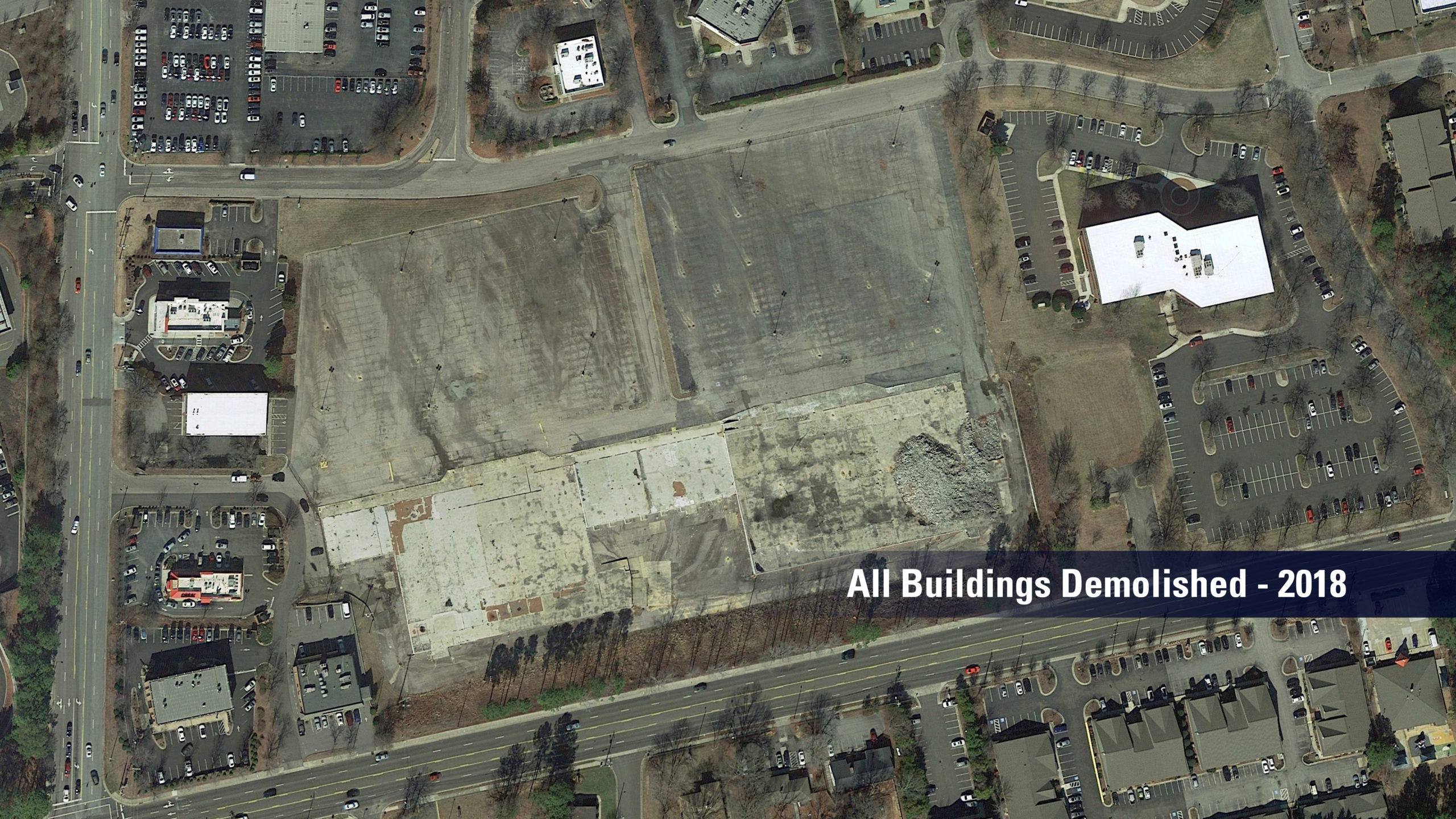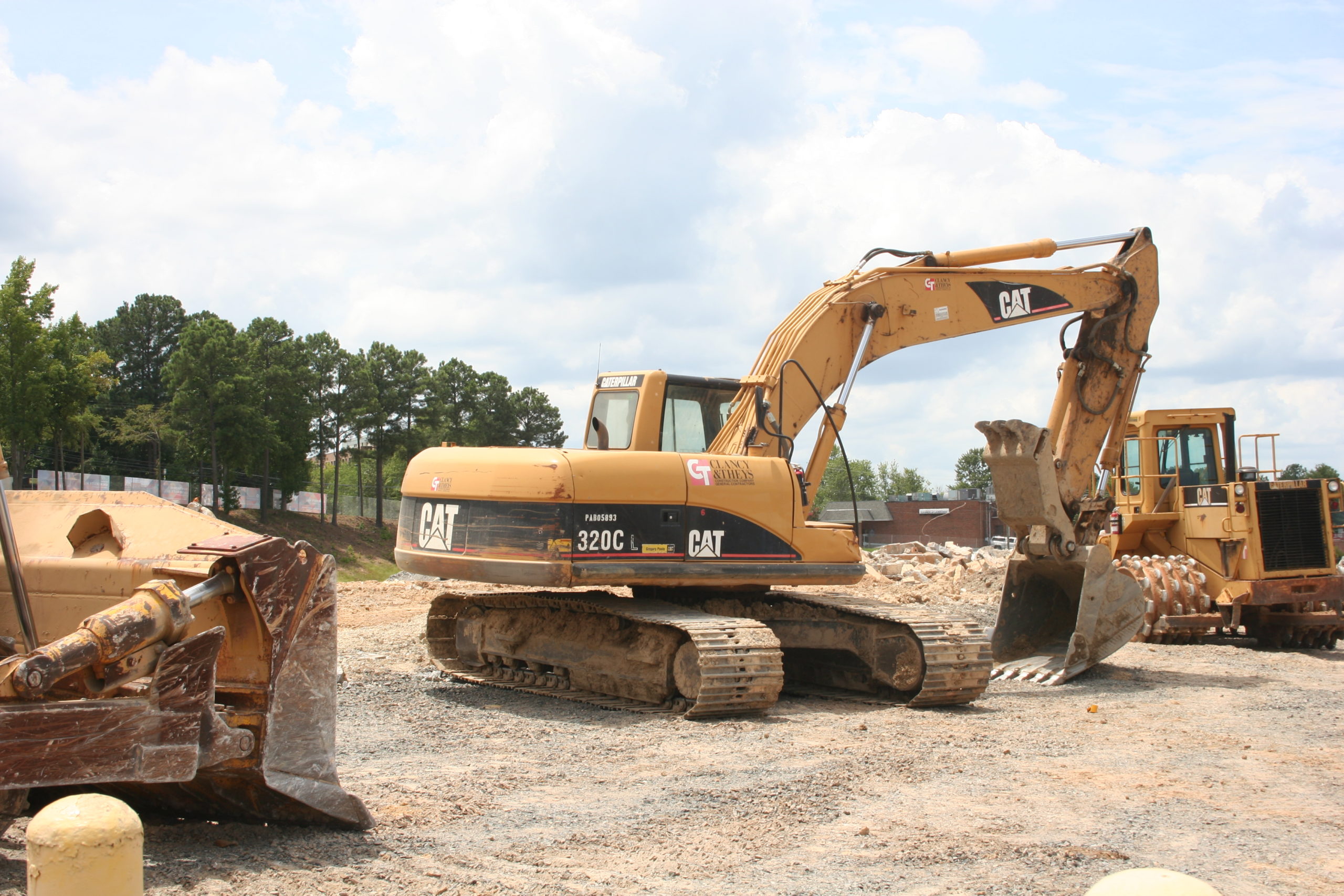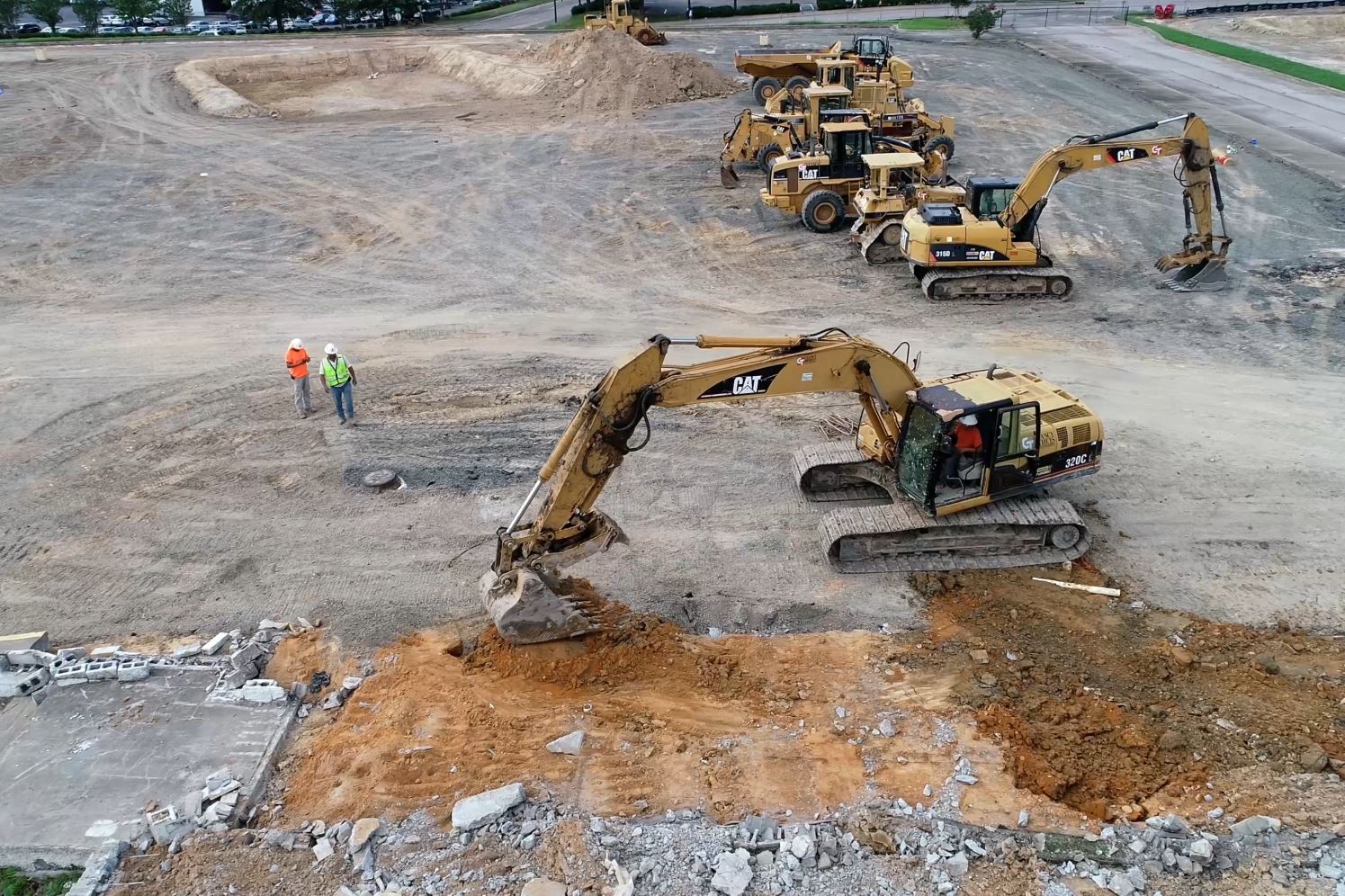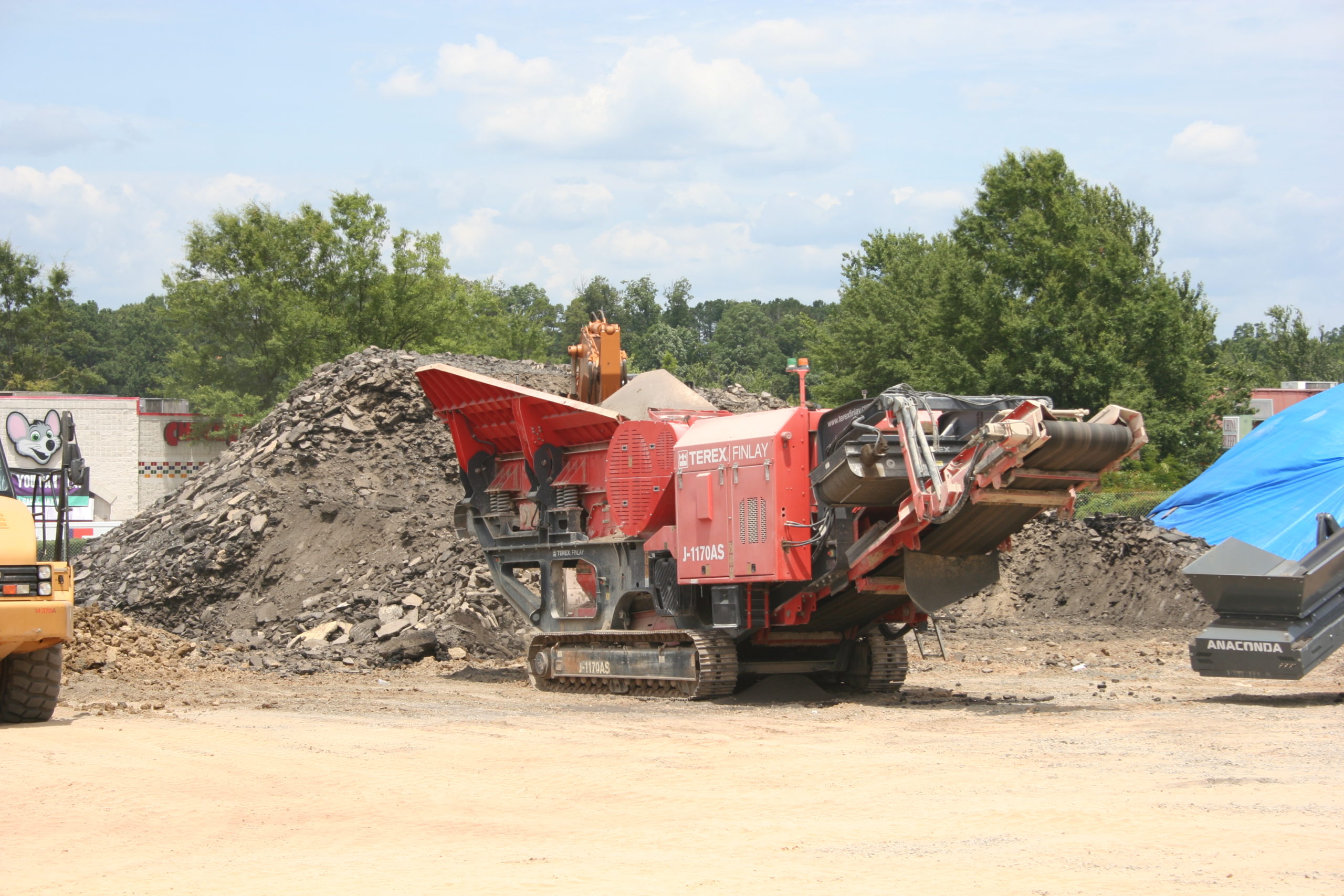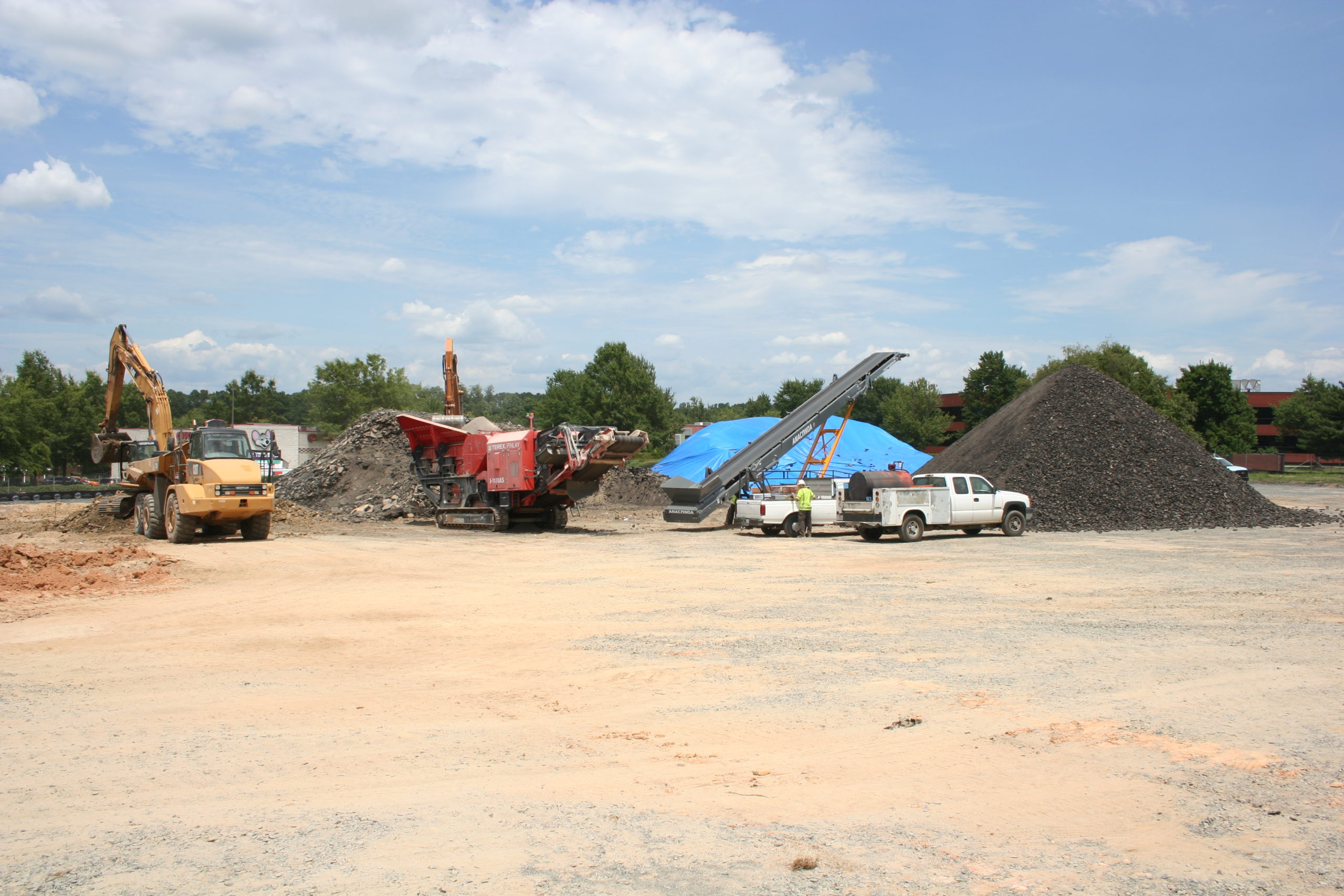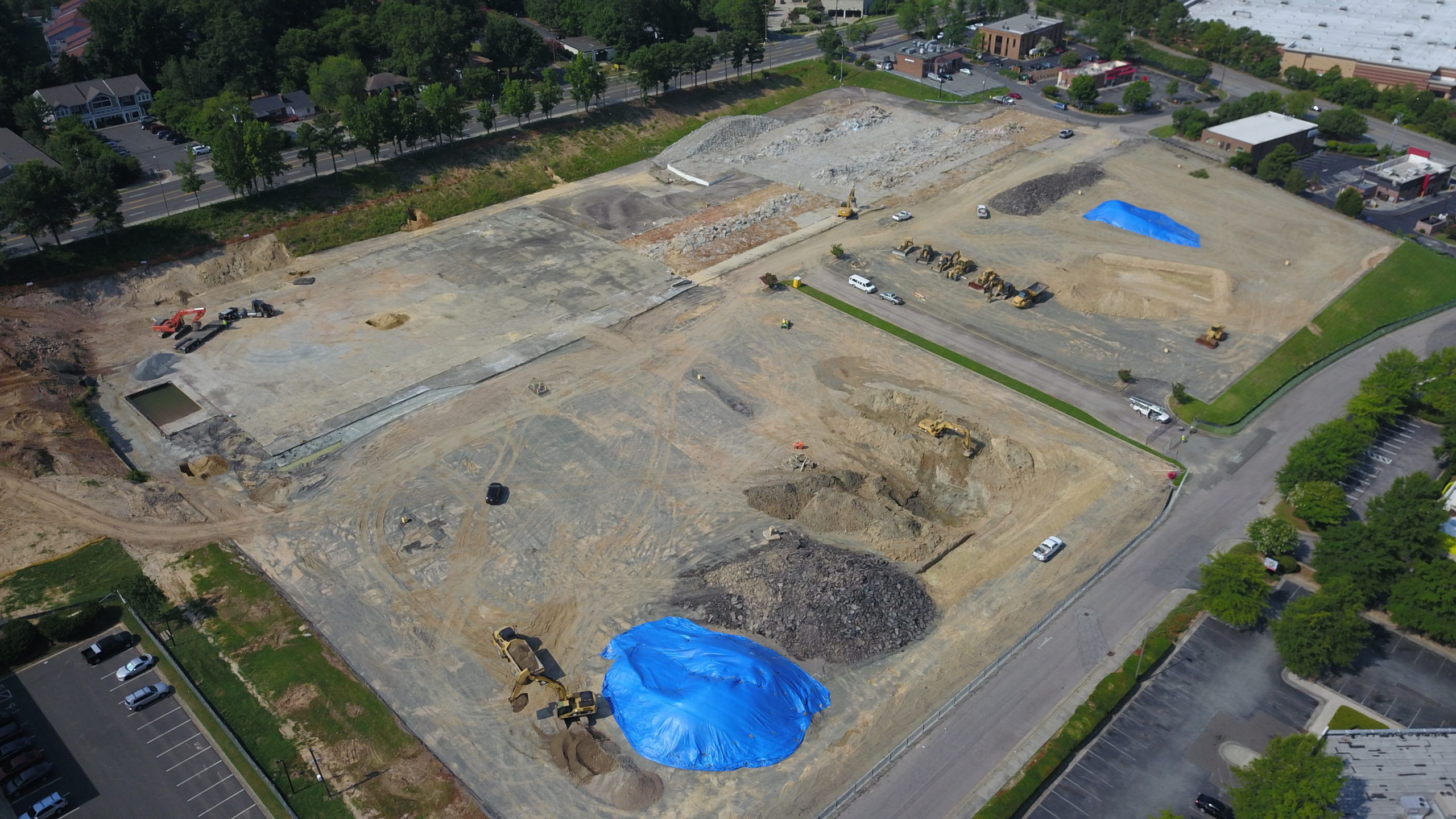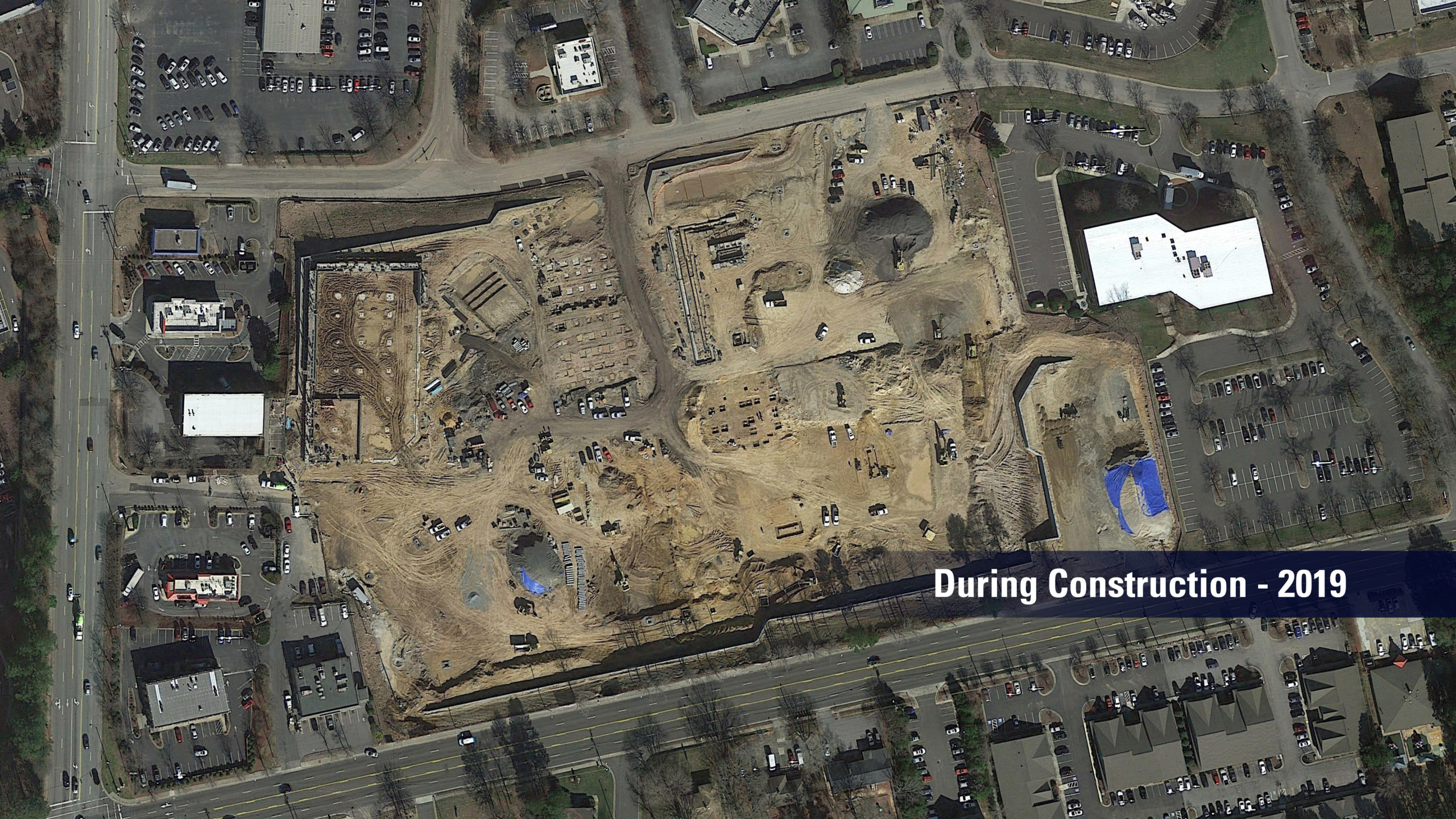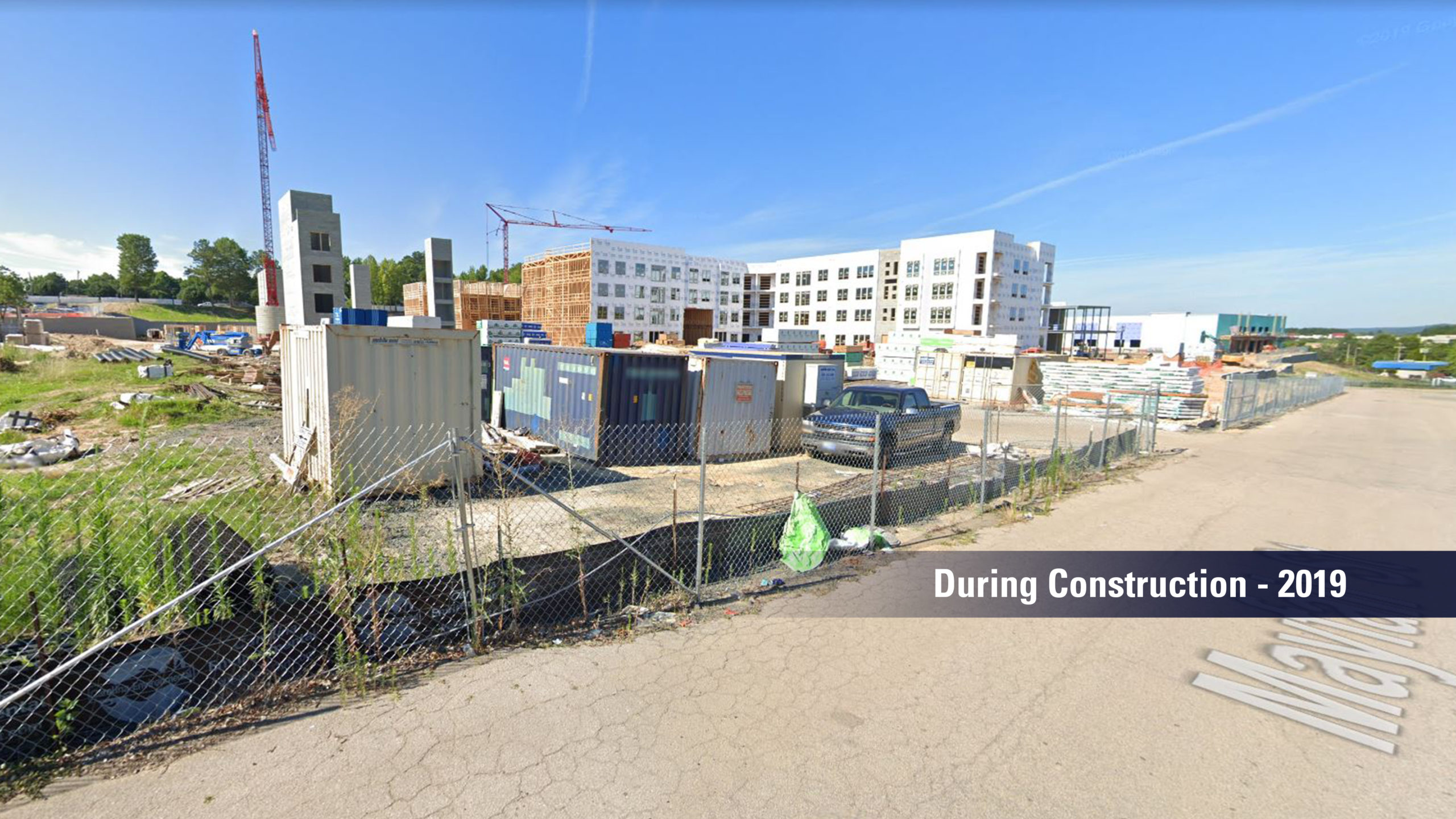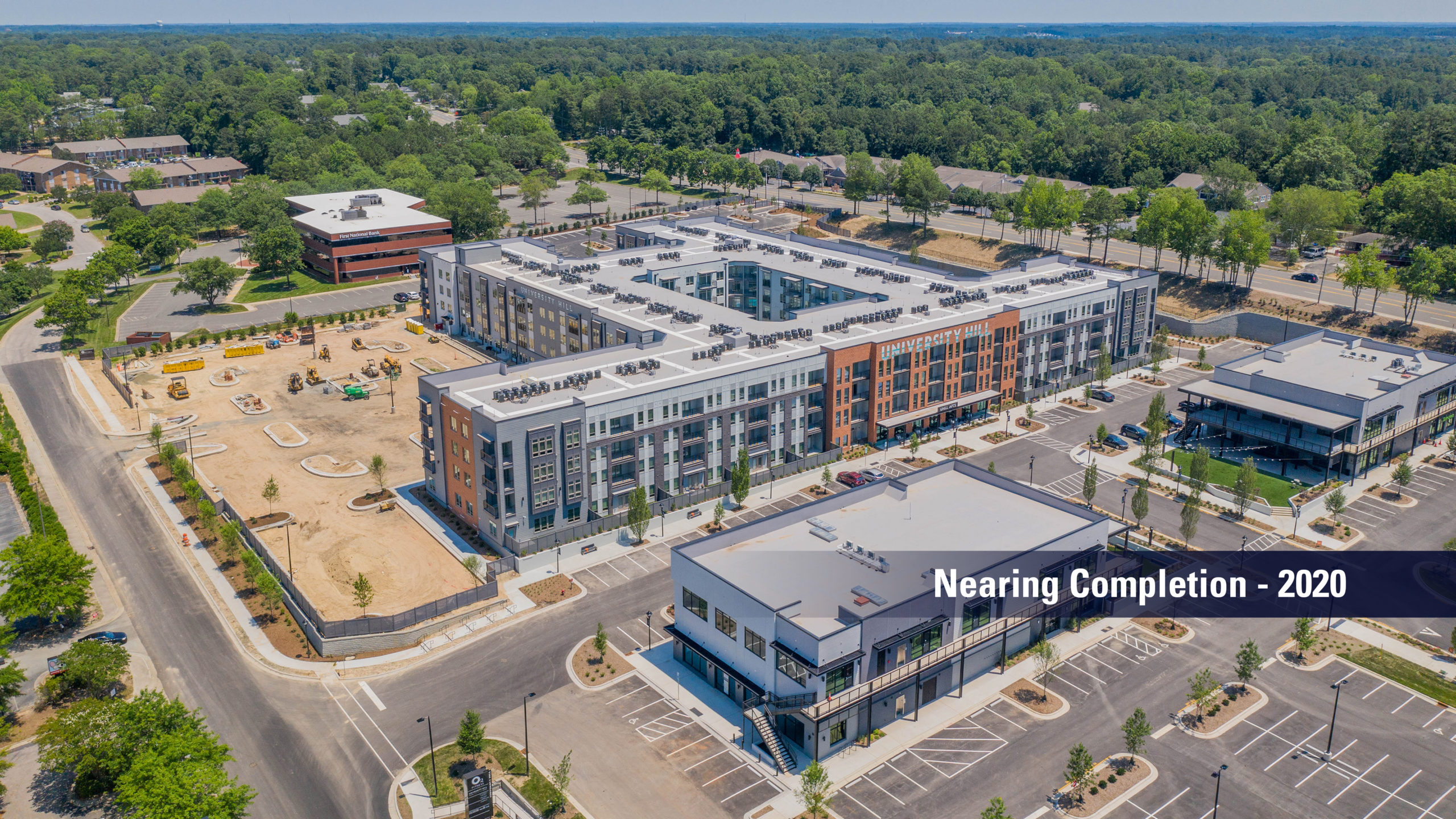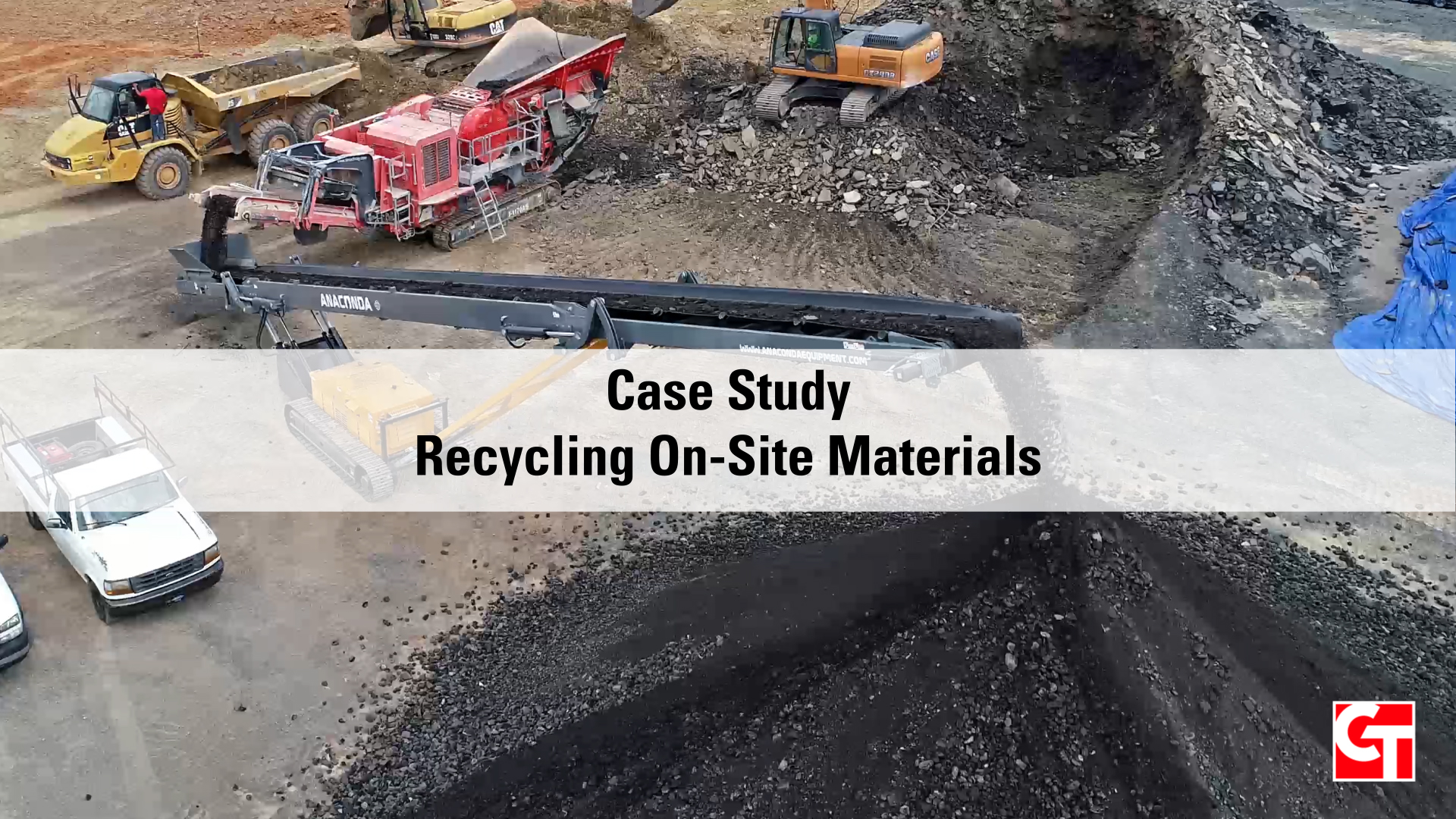 The original South Square site consisted of a K-mart and other small retailers making up a strip mall. When Clancy & Theys Construction Company took over the site, the strip mall had been demolished and the raw materials were stockpiled leaving us with approximately 15 acres of existing asphalt surface parking, concrete slabs-on-grade, existing concrete masonry unit (CMU) walls, as well as the existing stockpiled CMU materials. Initial site geotechnical investigations also revealed an abundance of on-site sandy soils in specific areas that could be suitable for on-site backfill operations, primarily as structural fill for segmental retaining walls. Knowing the abundance of these materials available on-site Clancy & Theys worked with the development, geotechnical, and project design teams to come up with a plan to maximize the re-use of these materials by salvaging during site demolition operations, sorting, crushing, and stocking piling materials on-site for use in the new development.
The original South Square site consisted of a K-mart and other small retailers making up a strip mall. When Clancy & Theys Construction Company took over the site, the strip mall had been demolished and the raw materials were stockpiled leaving us with approximately 15 acres of existing asphalt surface parking, concrete slabs-on-grade, existing concrete masonry unit (CMU) walls, as well as the existing stockpiled CMU materials. Initial site geotechnical investigations also revealed an abundance of on-site sandy soils in specific areas that could be suitable for on-site backfill operations, primarily as structural fill for segmental retaining walls. Knowing the abundance of these materials available on-site Clancy & Theys worked with the development, geotechnical, and project design teams to come up with a plan to maximize the re-use of these materials by salvaging during site demolition operations, sorting, crushing, and stocking piling materials on-site for use in the new development.
 Samples of the existing asphalt, concrete, and CMU materials were taken from the site early on, crushed, and material proctor reports prepared to determine suitability of these materials for re-use. By taking and crushing samples directly from the site we were able to determine accurate material gradations that could be expected during the full site demo and crushing operations. Using this information, segmental retaining walls were specifically designed around the parameters of the available on-site sandy soils, crushed concrete, and crushed CMU materials in order to ensure their suitability as structural fill for the number of segmental retaining walls around the site and for the building pads. The existing ABC sub-base at surface parking lots was carefully graded up, stockpiled, and protected throughout the duration of site construction for re-use during the asphalt paving operations. The removed and crushed asphalt was determined to be unsuitable for use as a final structural fill or sub-base material, however it did serve as an excellent material for temporary construction roads, material lay-down areas, and crane pads.
Samples of the existing asphalt, concrete, and CMU materials were taken from the site early on, crushed, and material proctor reports prepared to determine suitability of these materials for re-use. By taking and crushing samples directly from the site we were able to determine accurate material gradations that could be expected during the full site demo and crushing operations. Using this information, segmental retaining walls were specifically designed around the parameters of the available on-site sandy soils, crushed concrete, and crushed CMU materials in order to ensure their suitability as structural fill for the number of segmental retaining walls around the site and for the building pads. The existing ABC sub-base at surface parking lots was carefully graded up, stockpiled, and protected throughout the duration of site construction for re-use during the asphalt paving operations. The removed and crushed asphalt was determined to be unsuitable for use as a final structural fill or sub-base material, however it did serve as an excellent material for temporary construction roads, material lay-down areas, and crane pads.
The process did present challenges as well. Fortunately, our site was large enough to accommodate an abundance of stock piled materials. Strategic planning from the Clancy & Theys operations and grading teams for site sequencing and material stockpile locations limited unnecessary costs associated with extra handling of the materials and relocating of the stockpiles around the site. Another challenge that was presented during pre-construction was the ability to quantify the amount of these materials that would be available for re-use.  Ultimately, assumptions had to be made and quantified during the pre-construction process, but these assumptions were able to be field verified to a certain degree of accuracy using Clancy & Theys’ Virtual Design and Construction (VDC) Department to quantify the material stockpiles throughout the construction process as demonstrated in the attached Volume Report dated 9/11/19.
Ultimately, assumptions had to be made and quantified during the pre-construction process, but these assumptions were able to be field verified to a certain degree of accuracy using Clancy & Theys’ Virtual Design and Construction (VDC) Department to quantify the material stockpiles throughout the construction process as demonstrated in the attached Volume Report dated 9/11/19.
Ultimately, the recycling and re-use of the on-site materials provided a readily available stockpile of backfill materials throughout the construction process and saved the project tens of thousands of dollars in avoided material import and export costs.
